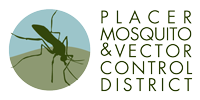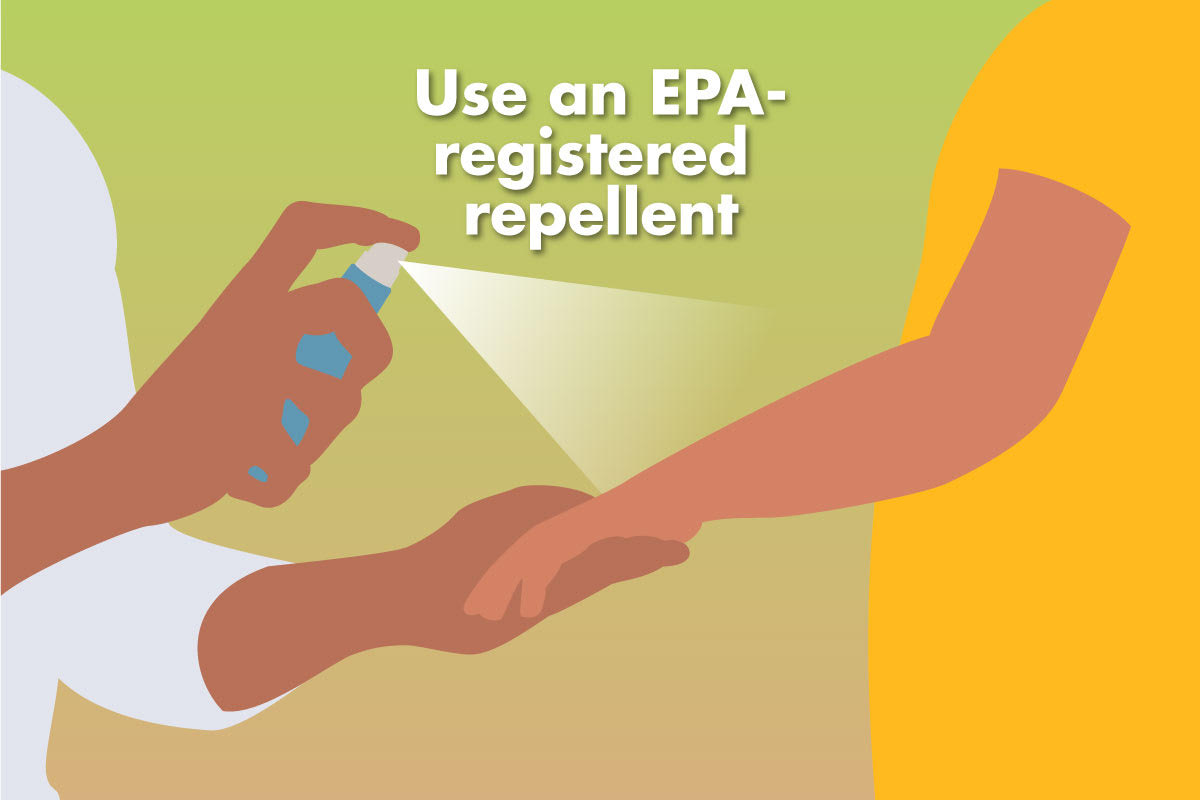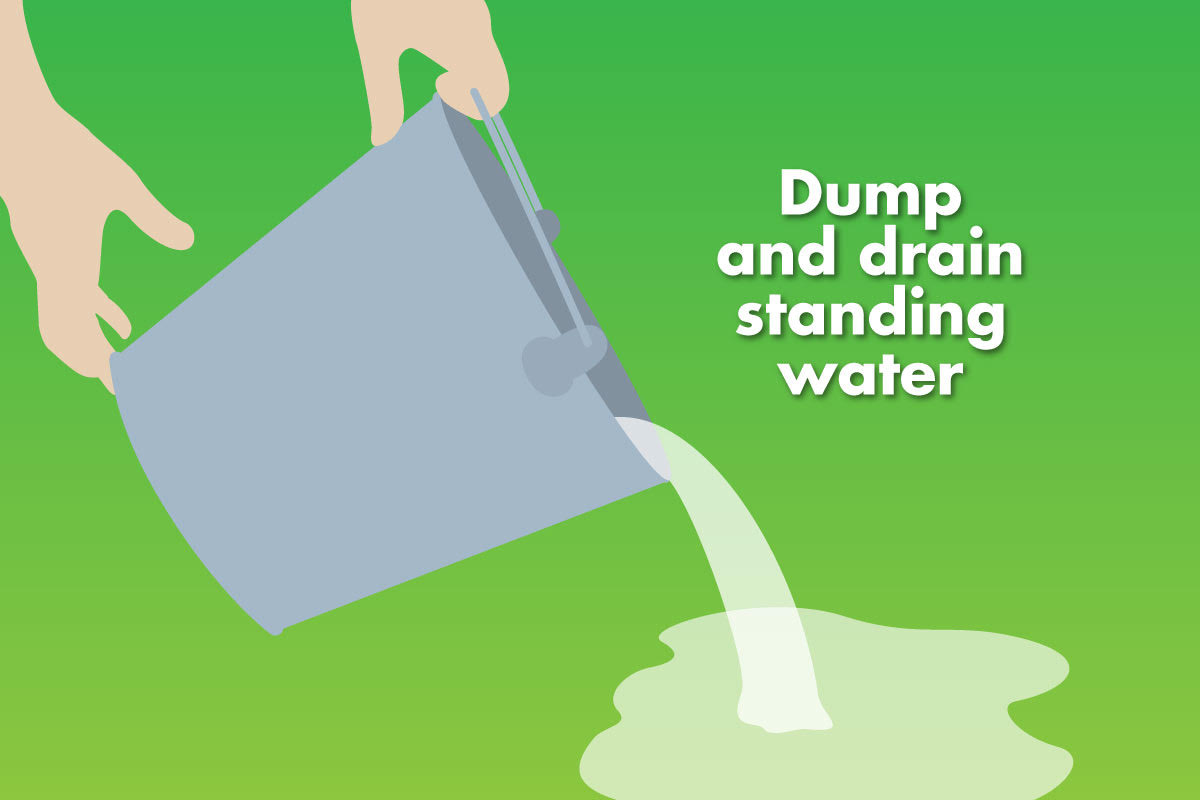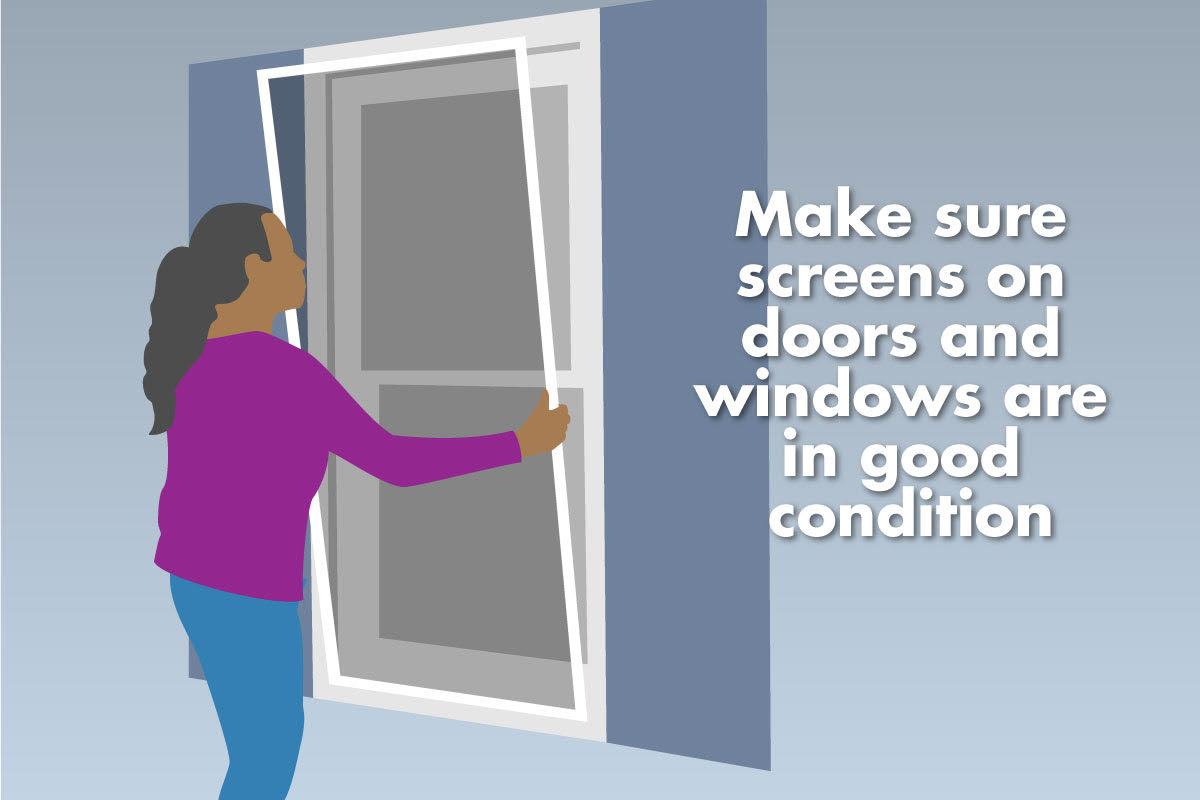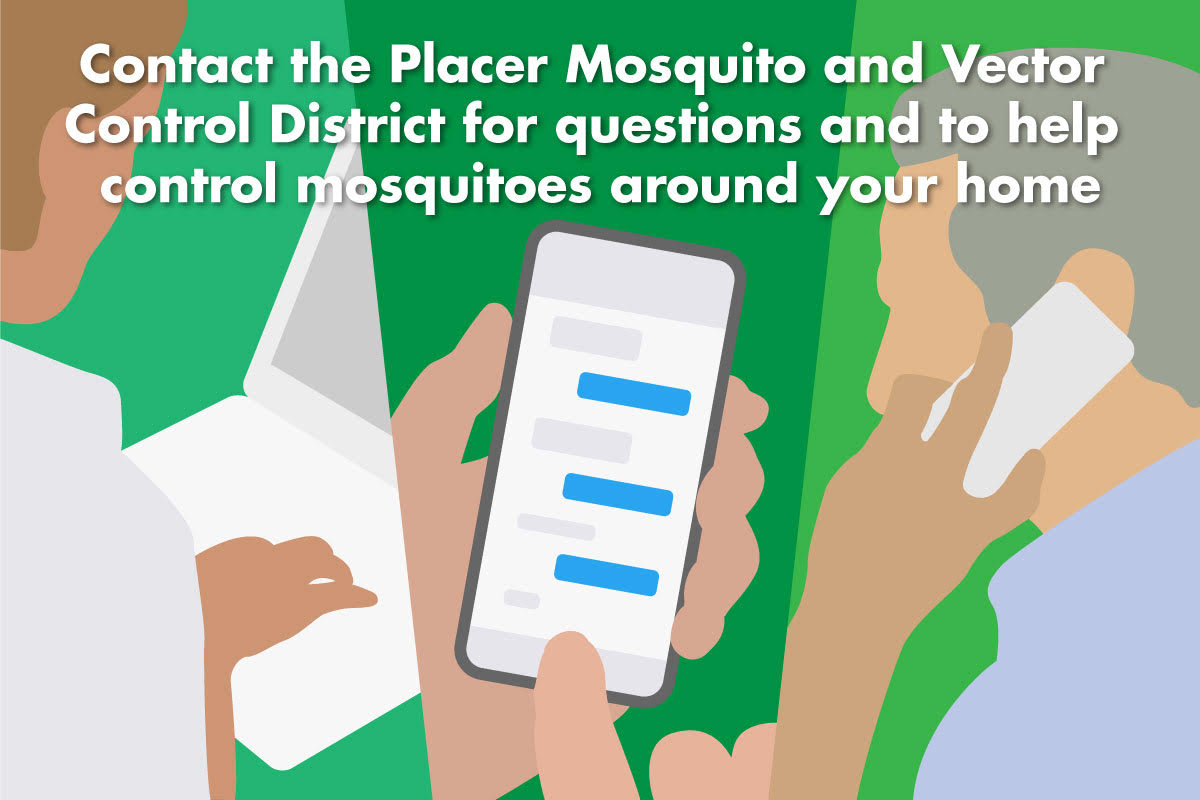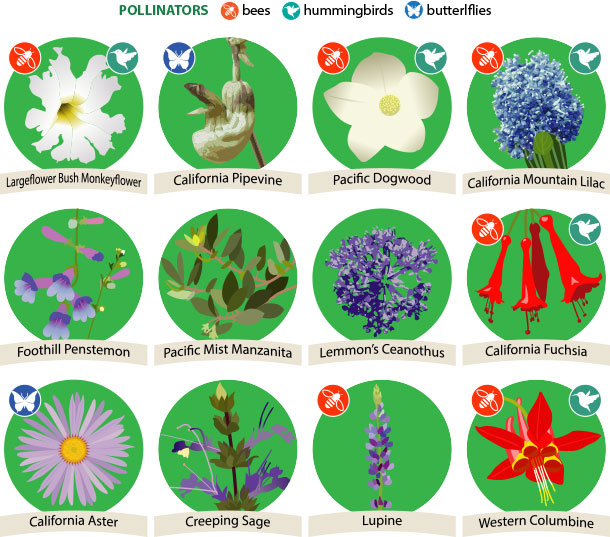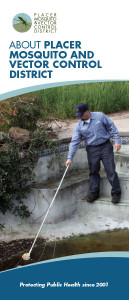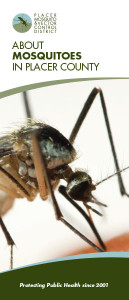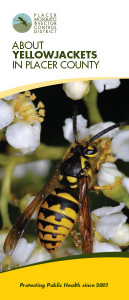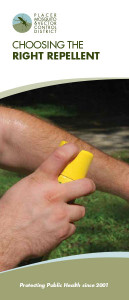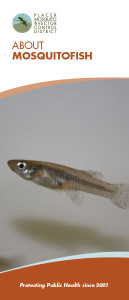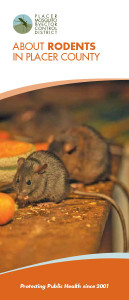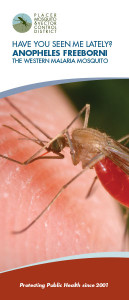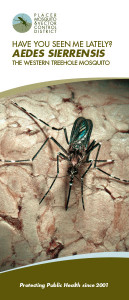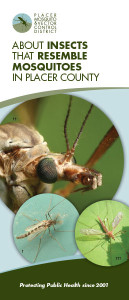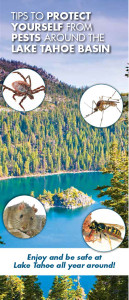The Placer Mosquito and Vector Control District relies on the community to be aware of threats from vectors and vector-borne diseases. An educated and empowered public is one of our most effective tools in preventing illness spread by mosquitoes and other vectors.
California Mosquito Awareness Week
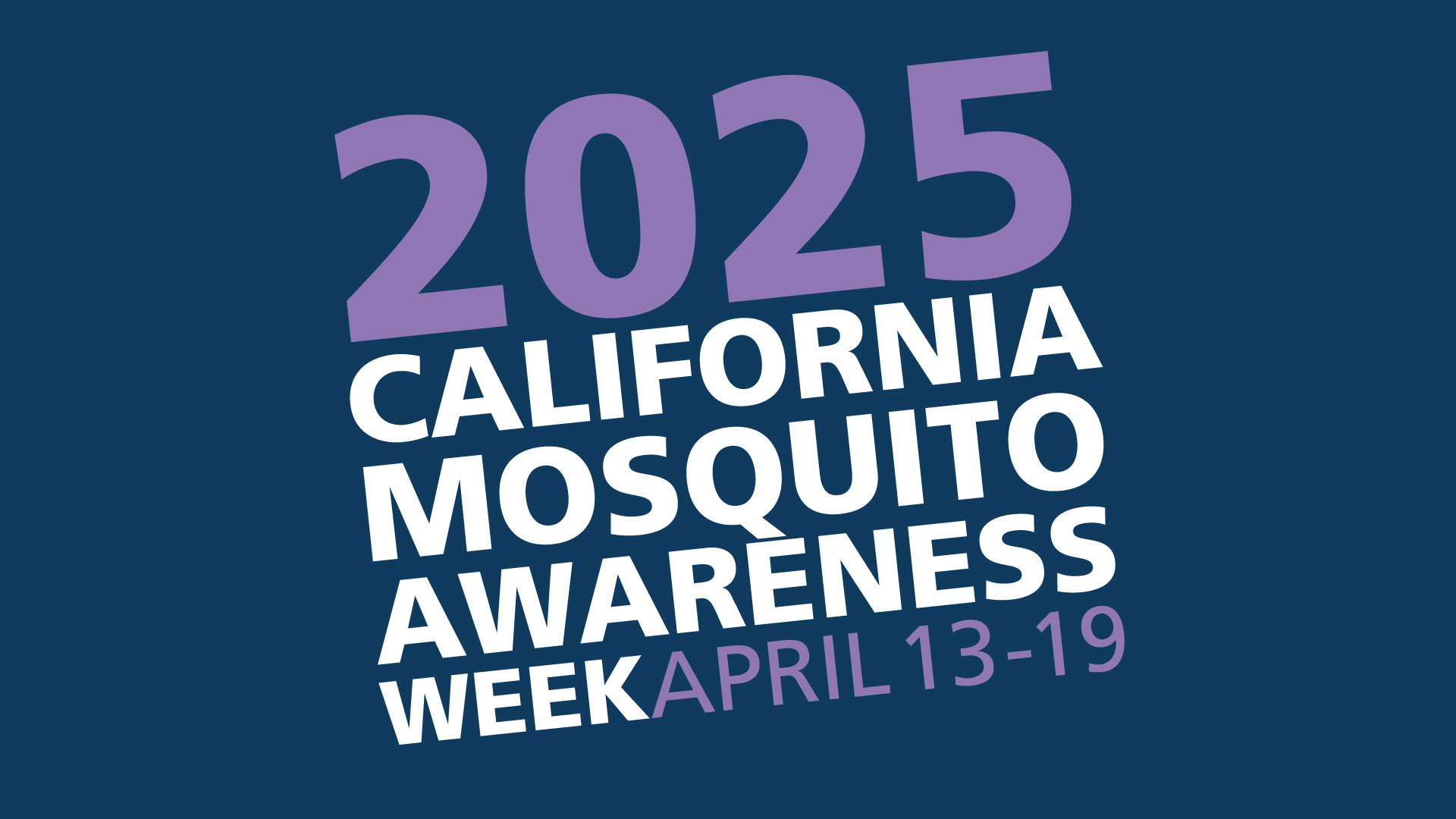
Join us in recognizing California Mosquito Awareness Week, a statewide effort running from April 13–19, 2025, to spotlight the importance of mosquito prevention and protection.
Mosquitoes are more than just a nuisance — they can carry serious diseases like West Nile virus, Zika, dengue, and chikungunya. This week is dedicated to educating our communities on how to reduce mosquito populations and protect our families, pets, and neighborhoods from these health threats.
Together, we can take simple steps to stay safe:
-
Eliminate standing water around your home
-
Use EPA-registered repellents
-
Keep doors and windows sealed
-
Report mosquito activity in your area
The Three Ds of Mosquito-borne Disease Prevention
- Drain any standing water that may produce mosquitoes.
- Defend yourself and your home by using an effective insect repellent and dressing protectively when outside. Make sure screens on doors and windows are in good condition.
- Contact the District for any additional help controlling mosquitoes around your home: (916) 380-5444.
Repellent
Choosing a repellent is important since not all repellents are the same. There are five active, EPA-approved ingredients known to be effective mosquito repellent:
- DEET (N,N-diethyl-m-toluamide)
- Picaridin (KBR 3023)
- Oil of lemon eucalyptus [p-menthane 3,8-diol (PMD)]
- IR 3535
- Permethrin
DEET (chemical name, N,N-diethyl-meta-toluamide or N,N-diethly-3-methyl-benzamide) is the active ingredient found in many insect repellent products. It is used to repel biting pests such as mosquitoes and ticks, including ticks that may carry Lyme disease. Products containing DEET currently are available to the public in a variety of liquids, lotions, sprays, and impregnated materials (e.g., wrist bands). Formulations registered for direct application to human skin contain from 4 to 100 percent DEET.
Picaridin (chemical name, 2-(2-hydroxyethyl)-1-piperidinecarboxylic acid 1-methylpropyl ester) is a colorless, nearly odorless liquid active ingredient that is used as an insect repellent against biting flies, mosquitoes, chiggers, and ticks. Picaridin products were sold in Europe and Australia for several years before being introduced to the U.S. market in 2005. Products contain a range of 5 to 20 percent of the active ingredient.
Oil of lemon eucalyptus is found naturally in eucalyptus leaves and twigs. It was first registered in 1948 as an insecticide and miticide (kills insects and mites) and today is found in both lotion and spray insect repellents. As with most plant oils, no adverse effects to humans are expected. Products contain a range of 30 to 40 percent of the active ingredient.
p-Mentane-3,8-diol is the chemically synthesized version of oil of lemon eucalyptus. It is applied to skin or to clothing to repel specific insects including mosquitoes, biting flies, and gnats. According to the Centers for Disease Control and Prevention, when repellents containing p-Mentane-3,8-diol were tested against mosquitoes found in the U.S., the p-Mentane-3,8-diol products provided protection similar to repellents with low concentrations of DEET. Products contain a range of 8 to 10 percent of the active ingredient.
IR3535 (chemical name, 3-[N-Butyl-N-acetyl]-aminopropionic acid, ethyl ester), also called Merck 3535, is used as an insect repellent against mosquitoes, deer ticks, and biting flies. This biopesticide was registered as an active ingredient in 1999. Before it was registered with EPA, IR3535 had been used as an insect repellent in Europe for 20 years with no significant harmful effects. Products contain a range of 7.5 to 20.07 percent of the active ingredient.
Permethrin is registered for use as both an insecticide and a repellent. Permethrin products are used on clothing, shoes, bed nets, and camping gear. Permethrin-impregnated clothing such as pre-treated shoes, socks, and pants repel and kill ticks, mosquitoes, and other insects and retain this effect after repeated laundering. Permethrin is also found in treated tents, tarps, bed nets, sleeping bags, and mattresses. The permethrin insecticide should be reapplied following the label instructions. Some commercial products are available pretreated with permethrin. Note that unlike DEET, picaridin, and oil of lemon eucalyptus, PERMETHRIN SHOULD NOT BE APPLIED DIRECTLY TO THE SKIN.
Repellent Precautions
The Placer Mosquito and Vector Control District recommends the following precautions when using insect repellents:
- Read all instructions on the label before applying, and follow those instructions for the best results.
- Apply repellents only to exposed skin and/or clothing (as directed on the product label.) Do not use repellents under clothing.
- Never use repellents over cuts, wounds or irritated skin.
- Do not apply to eyes or mouth, and apply sparingly around ears. When using sprays, do not spray directly on face – spray on hands first and then apply to face.
- Store all repellents out of reach of children.
- Do not allow children to handle the product. When using on children, apply to your own hands first and then put it on the child. You may not want to apply to children’s hands.
- Use just enough repellent to cover exposed skin and/or clothing. Heavy application and saturation are generally unnecessary for effectiveness. If biting insects do not respond to a thin film of repellent, then apply a bit more.
- After returning indoors, wash treated skin with soap and water or bathe. This is particularly important when repellents are used repeatedly in a day or on consecutive days. Also, wash treated clothing before wearing it again. (This precaution may vary with different repellents – check the product label.)
- If using a product containing DEET, use products with less than 25% DEET for adults and less than 10% DEET for children.
- If using a product containing oil of lemon eucalyptus, note that the label specifies that it should not be used on children under the age of three years.
- If you or your child gets a rash or other bad reaction that you suspect is from an insect repellent, stop using the repellent, wash the repellent off with mild soap and water, and call a local poison control center for further guidance. If you go to a doctor because of the repellent, take the repellent with you to show the doctor.
To download our repellent brochure, click here.
How to Create a Native Landscape to Control Mosquitoes at Home
Placer Mosquito and Vector Control District and the UC Master Gardeners of Placer County worked together to create this guide to help Placer County residents create a modern, low-water and mosquito deterrent landscape. From how to attract pollinators to your garden beds to how to keep mosquitoes from breeding in your ponds, this guide is meant to help inspire you to create, maintain and enjoy a beautiful front or back yard.
Brochures & Fact Sheets
Click to download Placer Mosquito brochures and fact sheets below.






